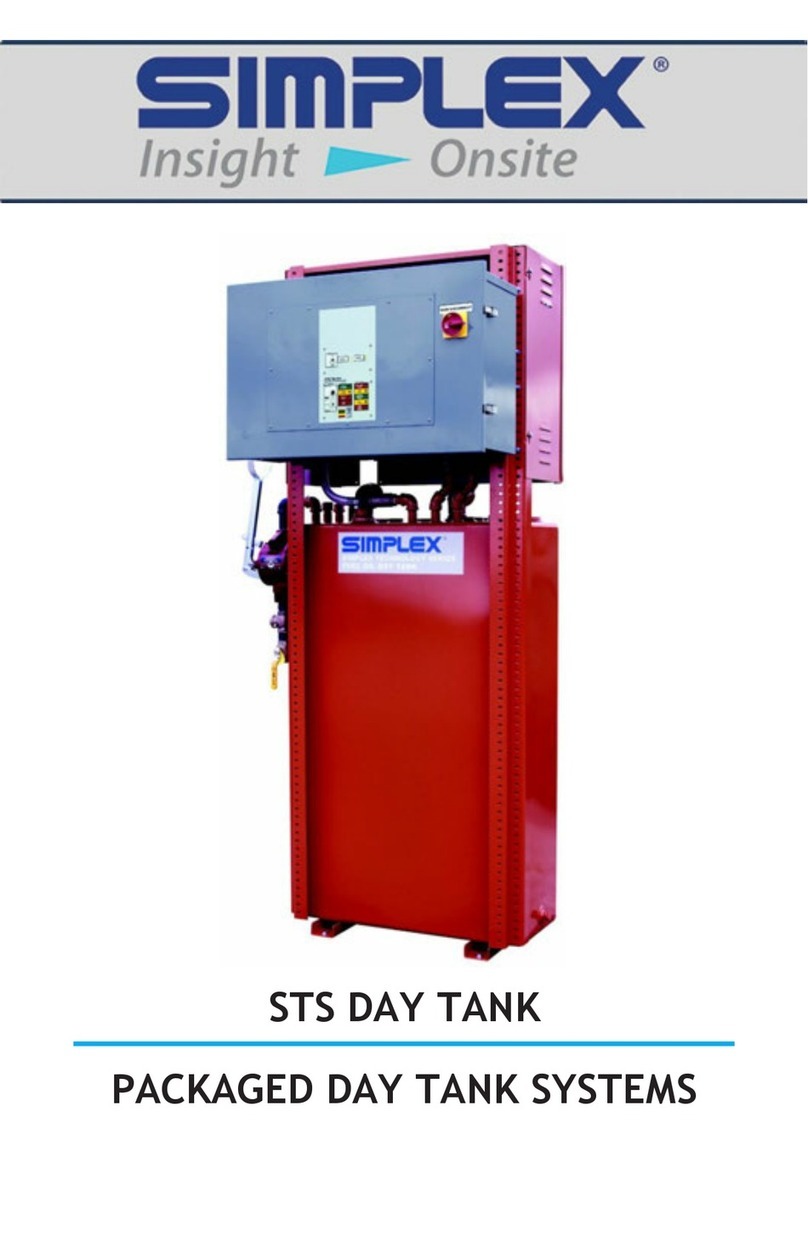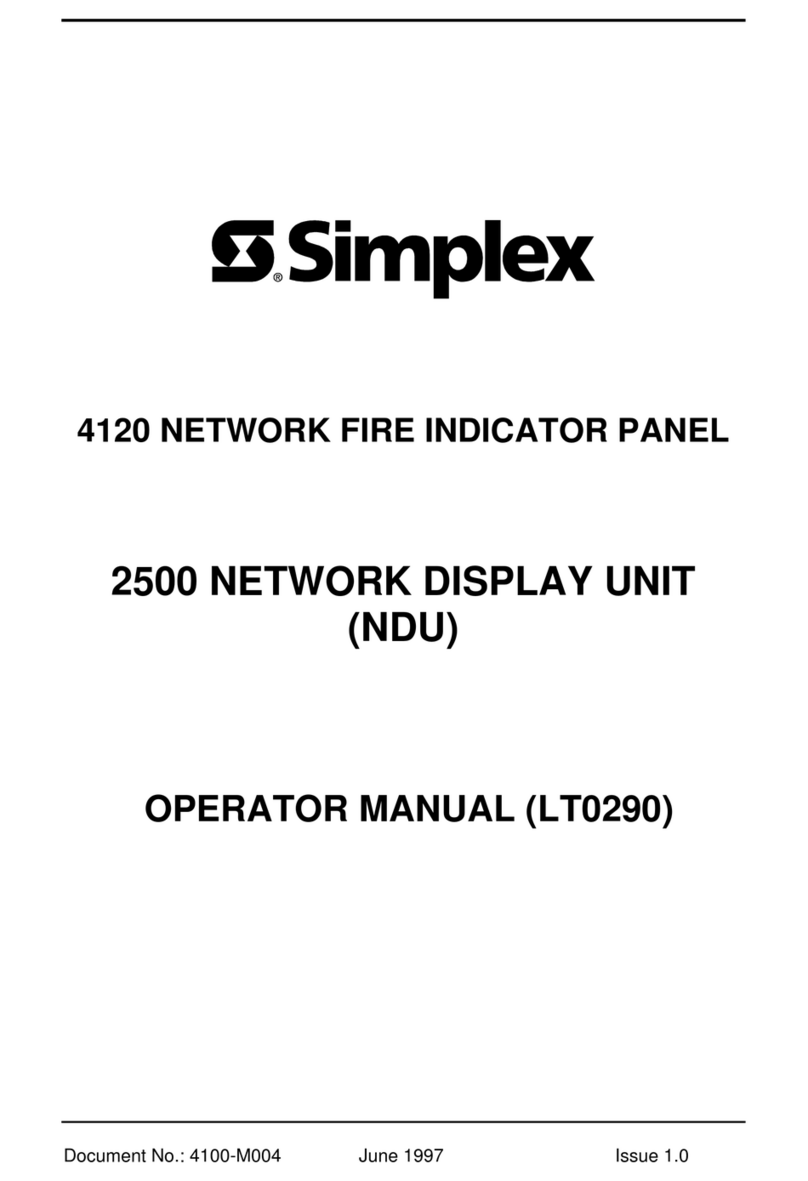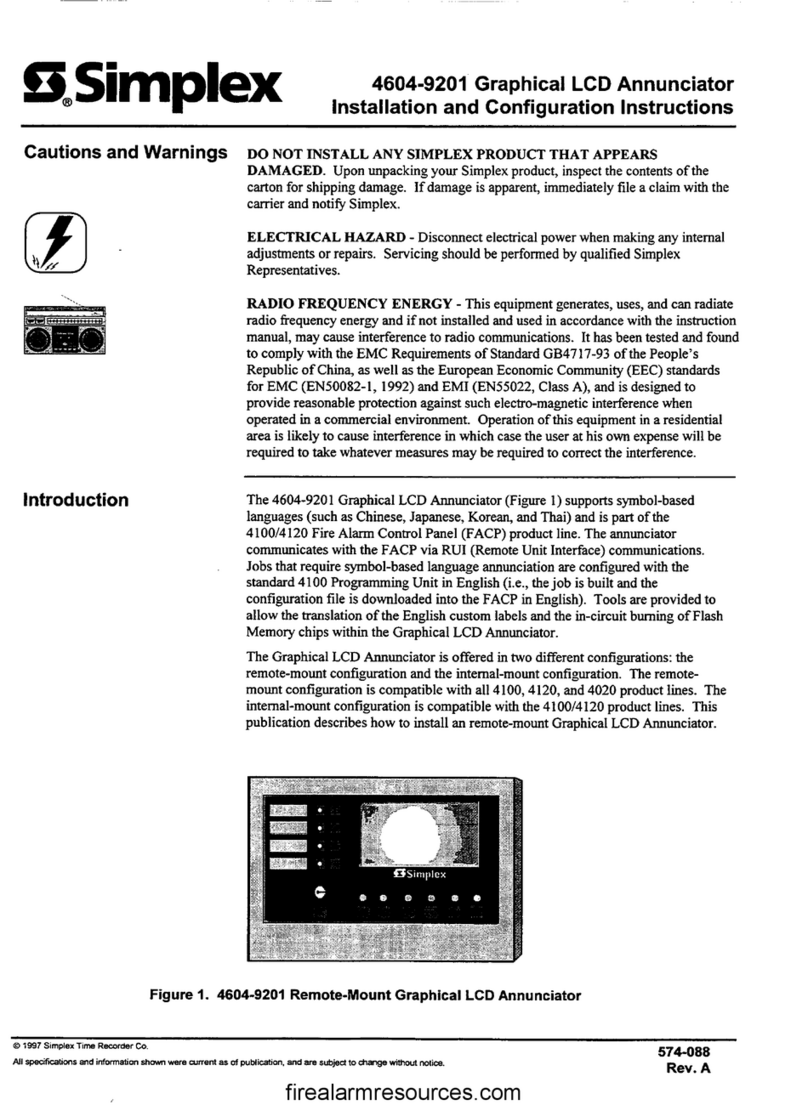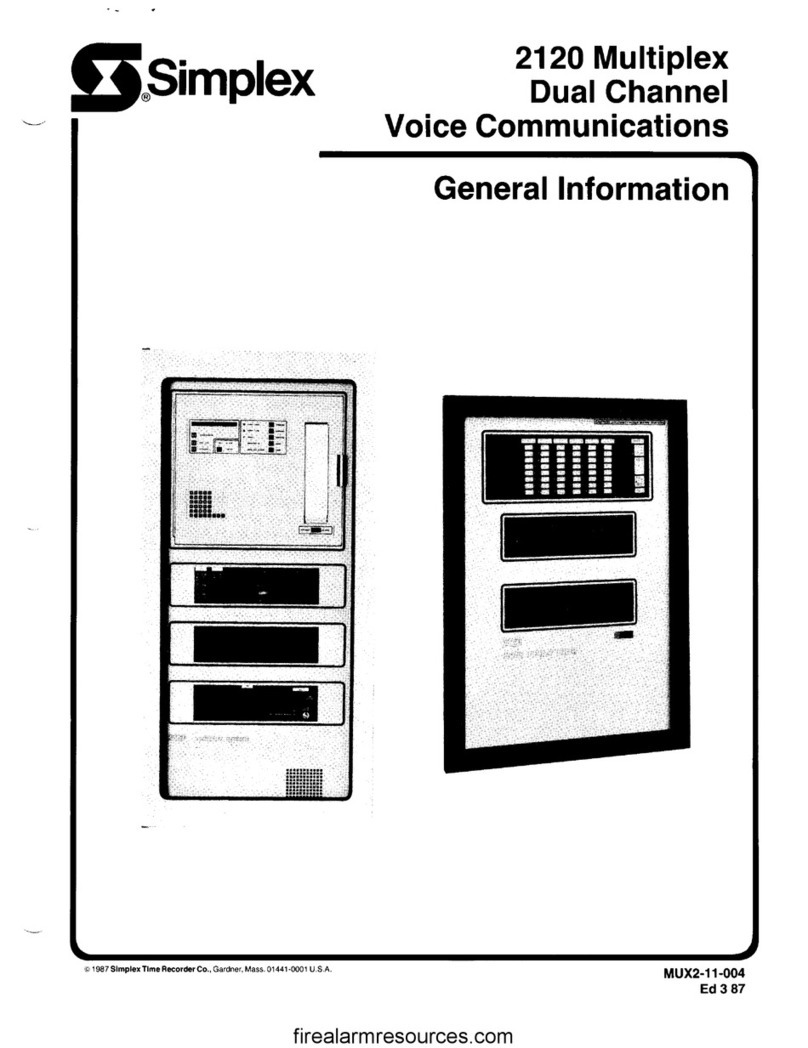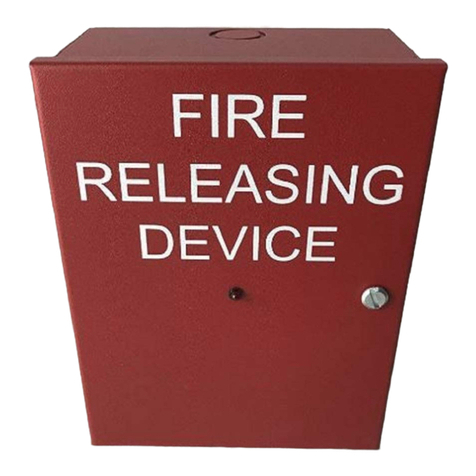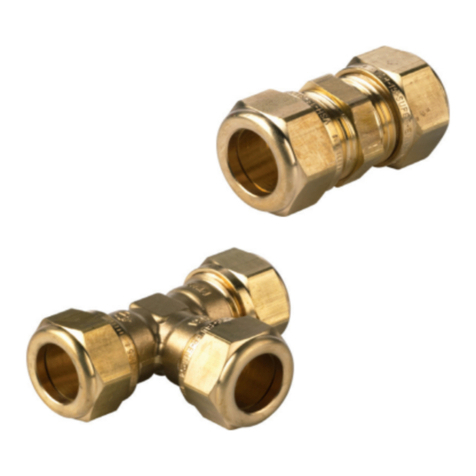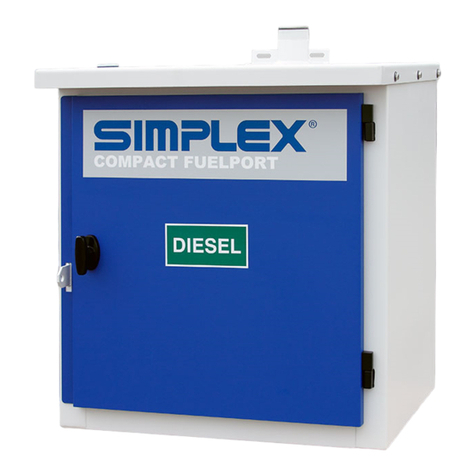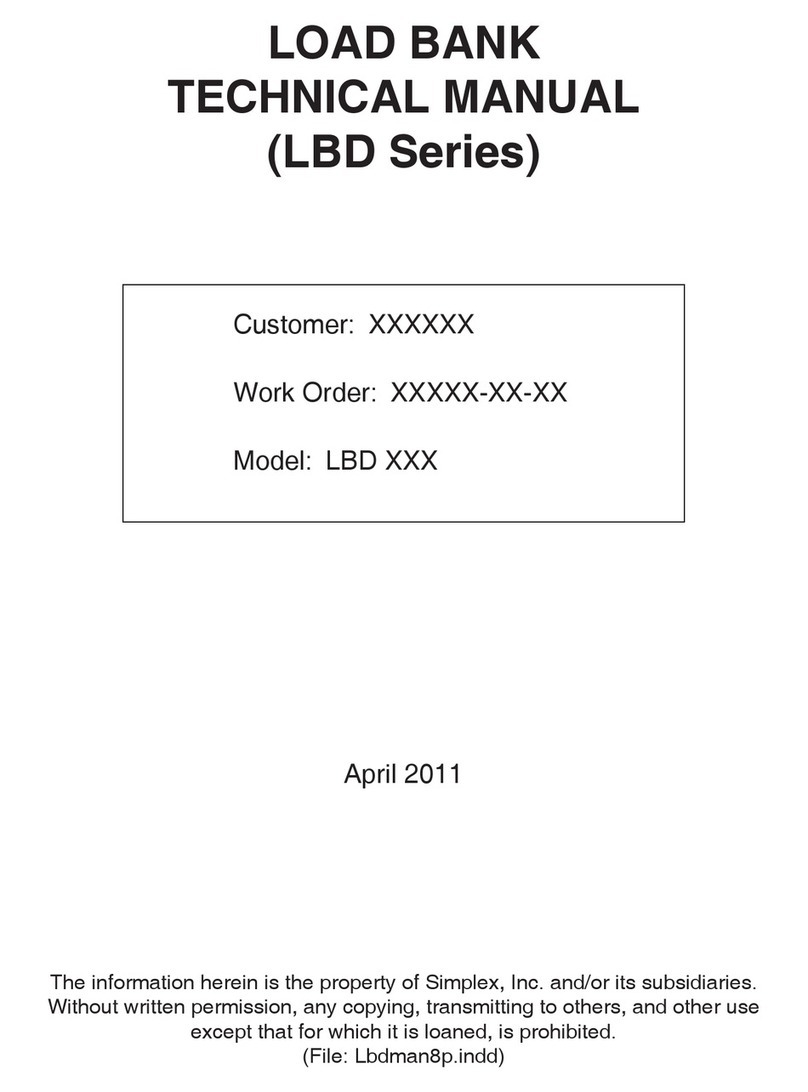
8
connected or is obstructed the tank will distort
and possibly rupture. In installations where the
main fuel tank is above ground the overow pipe
should be connected to an Overow Tank (Option
#390 Recommended). DO NOT INSTALL A
VALVE IN THE OVERFLOW LINE!
3. Attach the Day Tank Intake Line (ll pipe) from
the main fuel tank to the pump inlet. is is an
NPT internal connection. Use black pipe with
a union and size per the dimensional drawing.
Optional fuel strainer (Option 060) with #60 mesh
is recommended.
4. Attach the Engine Supply Line. is is an NPT
external connection. Use black pipe with a union
and size per the dimensional drawing in this
manual. Attach the Engine Return Line. is is an
NPT internal connection. Use black pipe with a
union and size per the dimensional drawing.
5. Attach the Engine Return Line. is is a NPT
internal connection. Use black pipe with a union
and size per the dimensional drawing.
6. WARNING! Verify the Day Tank mode selector
switch is in the “O” position. Supply a 115-1-
60, 15A, circuit breaker protected circuit from
a reliable power bus to the control power ter-
minal board (TB”PS”) at terminals 1 and 2.
GROUND THE DAY TANK! Secure the conduit
end to the le side of the cover at the holes provid-
ed. Replace the cover.
Verify the Main Discon-
nect Switch and pump
Auto-Off-Run switches
are in the O position
before performing instal-
lation procedure.
Risk of electric shock!
More than one Discon-
nect Switch may be re-
quired to de-energize
the equipment before
servicing.
IMPORTANT NOTE!! The system shall be for use with fuel oil as
described by NFPA321, “Basic Classication of Flammable and Com-
bustible Liquids.” As dened by this standard, the fuel supply system
shall be for use with “combustible liquids,” those having a ash point
at or above 100°F and further dened as Class II or Class III liquids. In
no case shall a liquids having a ash point less than 100°F be used. In
every case, the system shall not be used or applied at a temperture in
excess of the ash point of the contents. Electrical equipment used in
the system shall be in accordance with NFPA30, section 5-7, wherein
it states “For areas where Class II or Class III liquids only are stored
or handled at a temperature below their ash points, the electrical
equipment may be installed in accordance with provisions of NFPA70,
National Code, for ordinary locations...”
